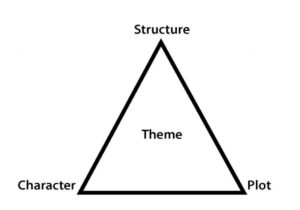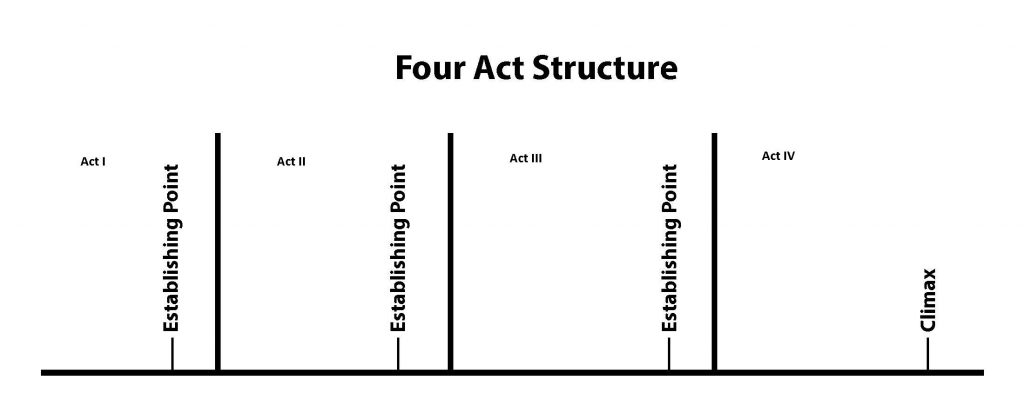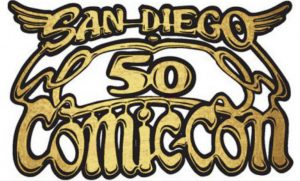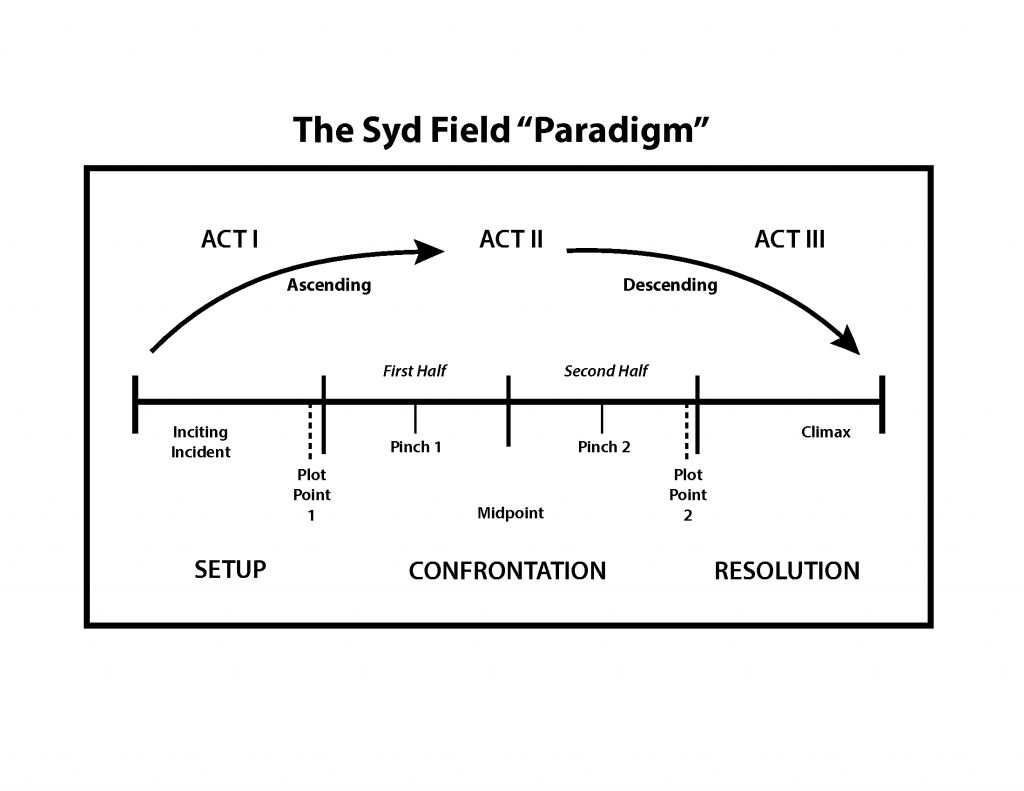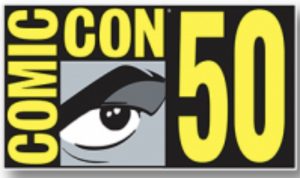 The following is an excerpt from my book How To Write A Novel: The Fundamentals of Fiction, Chapter 1:
The following is an excerpt from my book How To Write A Novel: The Fundamentals of Fiction, Chapter 1:
The Premise
In his bestselling book How to Write a Damn Good Novel, James N. Frey describes a premise as “the E = mc2 of novel writing.” The premise, he contends, “is the reason you are writing what you are writing … the core, the heart, the center, the soul of your expression.” He defines it as “a statement of what happens to the characters as a result of the core conflict in a story.” Agent Donald Maass defines a premise as
any single image, moment, feeling or belief that has enough power and personal meaning for the author to set her story on fire, propel it like a rocket for hundreds of pages, or perhaps serve as a finish line: an ending so necessary that every step of the journey burns to be taken.
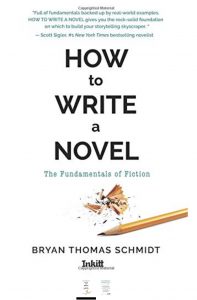 While you might say to yourself: What’s the big deal? A premise is an idea—a premise is so much more than that. Ideas are common. Original ideas are almost nonexistent these days. Everything’s been done. So, what makes your premise special is not the basic simple idea but the unique spin and angle you bring to it. A premise is as much in the execution and unique approach to a concept as it is the idea itself.
While you might say to yourself: What’s the big deal? A premise is an idea—a premise is so much more than that. Ideas are common. Original ideas are almost nonexistent these days. Everything’s been done. So, what makes your premise special is not the basic simple idea but the unique spin and angle you bring to it. A premise is as much in the execution and unique approach to a concept as it is the idea itself.
Again, in How to Write a Damn Good Novel, James N. Frey compares a novel to an argument and writes: “The premise of an argument is a statement of the conclusion that will be reached through the argument. Each part of the argument must contribute to the premise if the argument is a good one … the premise of a work of fiction is not provable or arguable in the real world … not a universal truth. In a novel, the premise is true only for the particular situation of that novel. But nonetheless it is proven by all that leads to it. Your novel’s premise is the conclusion everything in your story leads to.”
In his bestseller Writing the Breakout Novel, mega-agent Donald Maass writes of a premise: “Not just any idea, though, but one with soil rich enough to grow a highly memorable novel; one that will both feed the author’s imagination, and, finally, nourish millions of readers.” An idea is not enough. It must be backed up by all the details of character, setting, conflict, and theme. It’s an idea with something unique and special to say, something we haven’t seen, told in a way we haven’t encountered that pops off the page. Maass calls it “a breakout premise,” implying that truly hit, breakout novels start with something special at their core. I’m sure we’d all love to write a hit novel that breaks out. So, what is it that makes “something special”?
First, a premise should describe an experience that is unusual, one not encountered by everyone, at least not firsthand. The experience also takes place in a vivid, wholly realized world that is compelling in its details and stands apart as unique yet real and fascinating on multiple levels.
Second, a premise should involve a character or characters who are larger-than-life, who talk, think, and act in ways not everyone does or can. These types of characters have a boldness, drive, and determination to pursue journeys we only dream about and take risks and actions we only wish we had the courage to take ourselves. In the process they undergo growth and changes we admire greatly, that inspire us, embolden us, and leave us breathless with admiration.
To create such a premise takes effort. It may not arrive fully formed right off the bat. Some great premises are discovered in the course of writing and discovering a story, but all successful writers learn to identify them and cling to them with all their might when they do. The best premises have the power to illuminate and confront, challenging our most deeply held beliefs, our hopes, our fears, our faith, even our very wills and nature. They engage readers’ imaginations and emotions and raise questions, hopes, fears, and more that have them yearning to turn the pages, cheer for the heroes, boo the villains, and reach the inevitable climactic confrontation that sets everything right again and resolves the mystery and uncertainty it evoked when it began.
Such a premise is so much more than just boy meets girl and falls in love or boy sets out to save the world. There’s something unique and special about the boy and the girl, what draws them together, where and how they come together, and why they are willing to fight for their love. The boy is someone special who believes he might actually save the world, after all. No ordinary Joe would dare undertake such a noble quest. It takes a certain level of courage, even determination, a refusal to surrender to insecurity and incredible odds, and an undeterred drive to keep going no matter what. I don’t know about you, but while I have met such people, I have found them to be few and far between. And those few-and-far-between people are the heart of good, successful stories. So, your premise requires one. Character is story. Story is character. Story flows from character. There really is no chicken or the egg question here about who came first. Who always leads into What.
So, to write your novel, you first need a really good idea with premise potential. You may not devise all the pieces before you write, but you must write looking for them to fall into place, and you will certainly need a solid concept to get you started. How you come up with it is something I cannot teach. It really is between you and your muse. Singer-songwriter John Denver used to say the ideas for his songs came from the aether—just floating out there waiting to be discovered, and he was the lucky soul who connected at the right moment to find them and give them life. In some ways, this is the way stories tend to work as well. Your ideas will come from your life, people you know, places you’ve been or want to go, things you’ve done or want to do, etc., and then your imagination should take over and start working on the rest. There is a certain magic to storytelling that can be neither easily described nor taught. That’s where the talent comes in. But it will take more than talent to write your novel. It will also take determination and a drive to push through the struggles and keep going no matter what. And so, the more passionate you are about your premise, the more likely you are to succeed. If nothing else, pick a premise that fires you up, not just the first seemingly viable one that comes in your head. Find the one that hooks you and won’t let you go. That’s where your great novel will surely come from.
Let’s look at some examples Frey gives of premises from famous novels:
The Godfather by Mario Puzo (the story of the Corleone Mafia family over generations): family loyalty leads to a life of crime.
The Old Man and the Sea by Ernest Hemingway (the story of an old Cuban fisherman who struggles against a marlin far out in the Gulf Stream off the Cuban coast): courage leads to redemption.
A Christmas Carol by Charles Dickens (the story of a miserable, cheap, bitter man who is visited by ghosts of past, present, and future and learns the meaning of Christmas): forced self-examination leads to generosity.
One Flew Over the Cuckoo’s Nest by Ken Kesey (the story of patients oppressed at a mental hospital): even the most determined and ruthless psychiatric establishment can’t crush the human spirit.
In effect, a premise is like an argument. A story can have only one premise, because you cannot prove two arguments well at once. Your story’s conclusion will have a cause-and-effect relationship with what came before. In most cases, the argument within the premise is about a dilemma the characters confront. If you start first with characters and think about your premise, you may come up with it as you consider the characters’ flaws and the obstacles they face, as well as their goals and needs. Frey writes: “There is no formula for finding a premise. You simply start with a character or situation, give the character a dilemma, and then meditate on how it might go.” By opening your imagination and letting it run, usually the possibilities are endless, and your premise will come to light in the process. Frey quotes Egri as saying: “Every good premise should contain an element of character which through conflict leads to a conclusion.” So in essence, what are your three Cs (Character, Conflict, Conclusion)? Identify them and you have your premise.
Since the story of characters changing because of dramatic conflict makes good fiction, your premise will define such a situation. Old high school friends meet after 20 years and fall in love despite her terminal illness. The coach of a small-town basketball team with a history of losses recruits the first black player to help lead the team to a championship. A tough technophobic cop must team with an android partner to solve his partner’s murder. Can you see the three Cs at work in all these examples?
A good premise will give your novel focus and power that carries readers through to the end. It will hold their attention. Keep them turning pages. Make them long to know what happens next. And it may well do the same for you as you write. In fact, it should, even for the dedicated outliners. Everything in good fiction propels and leads you to the conclusion of the story, which is also a decisive conclusion or answer to the argument of the premise. Anything else should be cut and dropped. So a well-conceived premise is inherent to a well-written novel and key to your success. You must know where you are going to successfully complete any journey. The premise is the target on the map of your storytelling journey. Start without it at your own peril.
The concept, idea, or premise is a start. Craft and work will do the rest.

